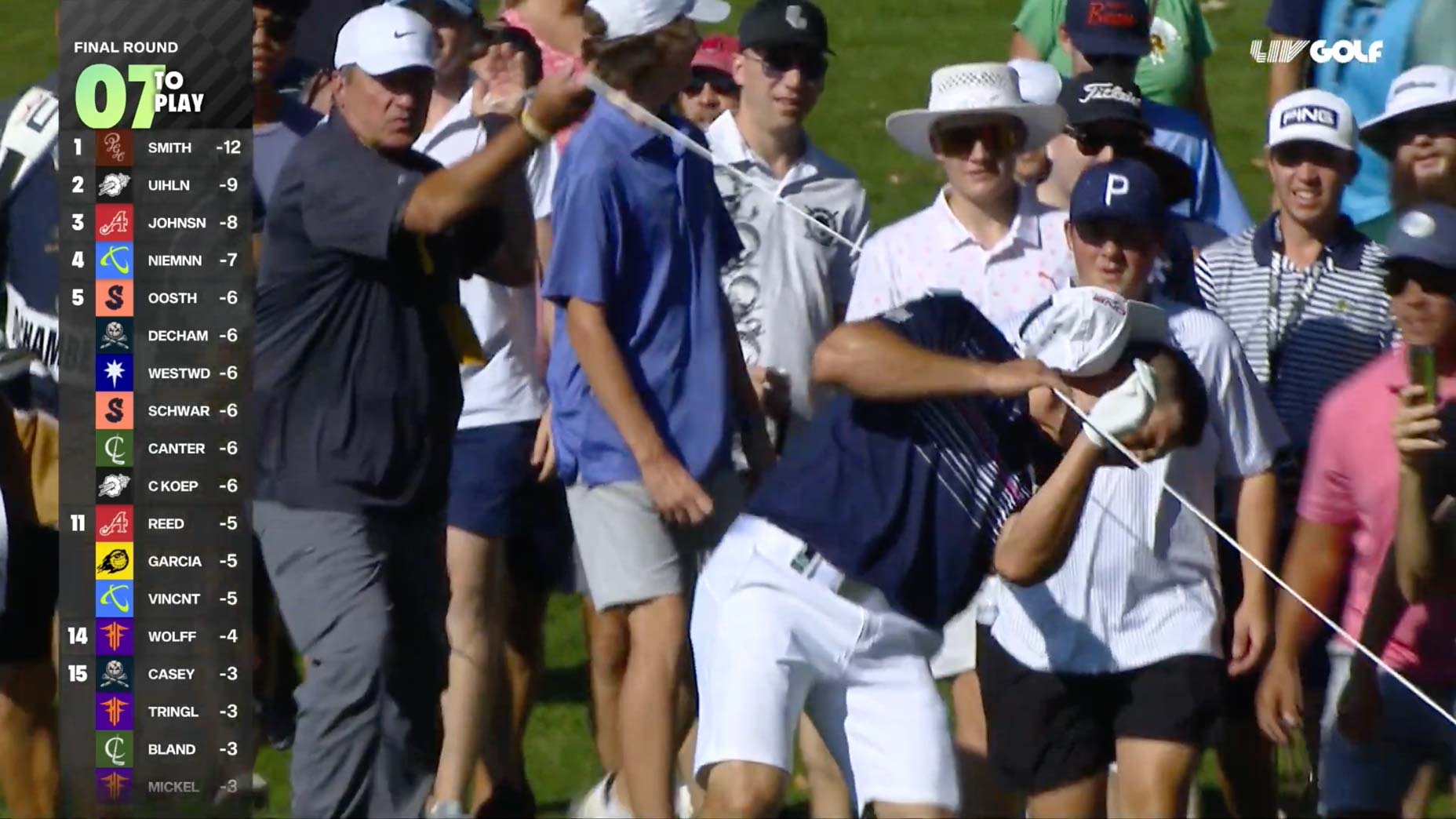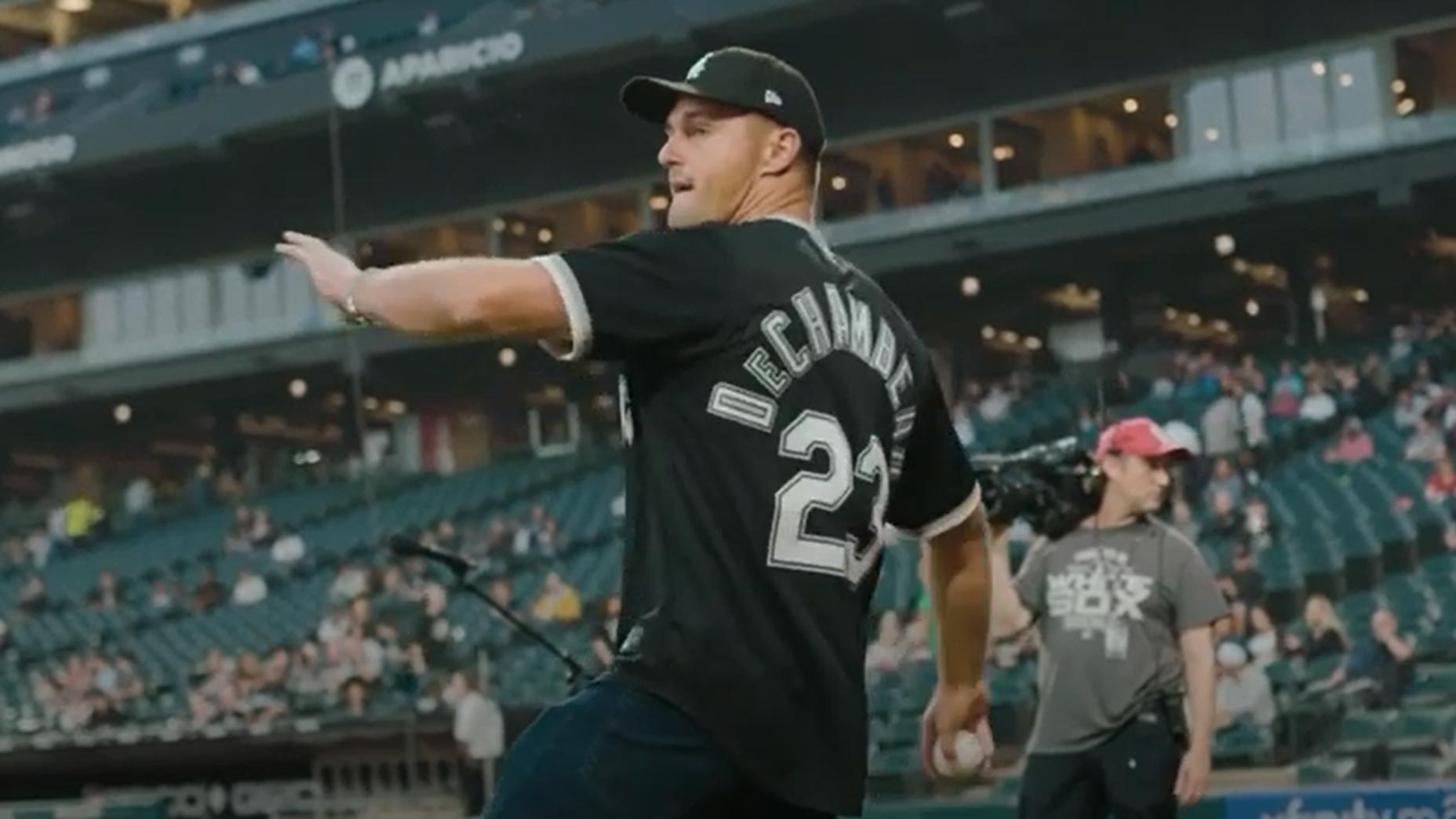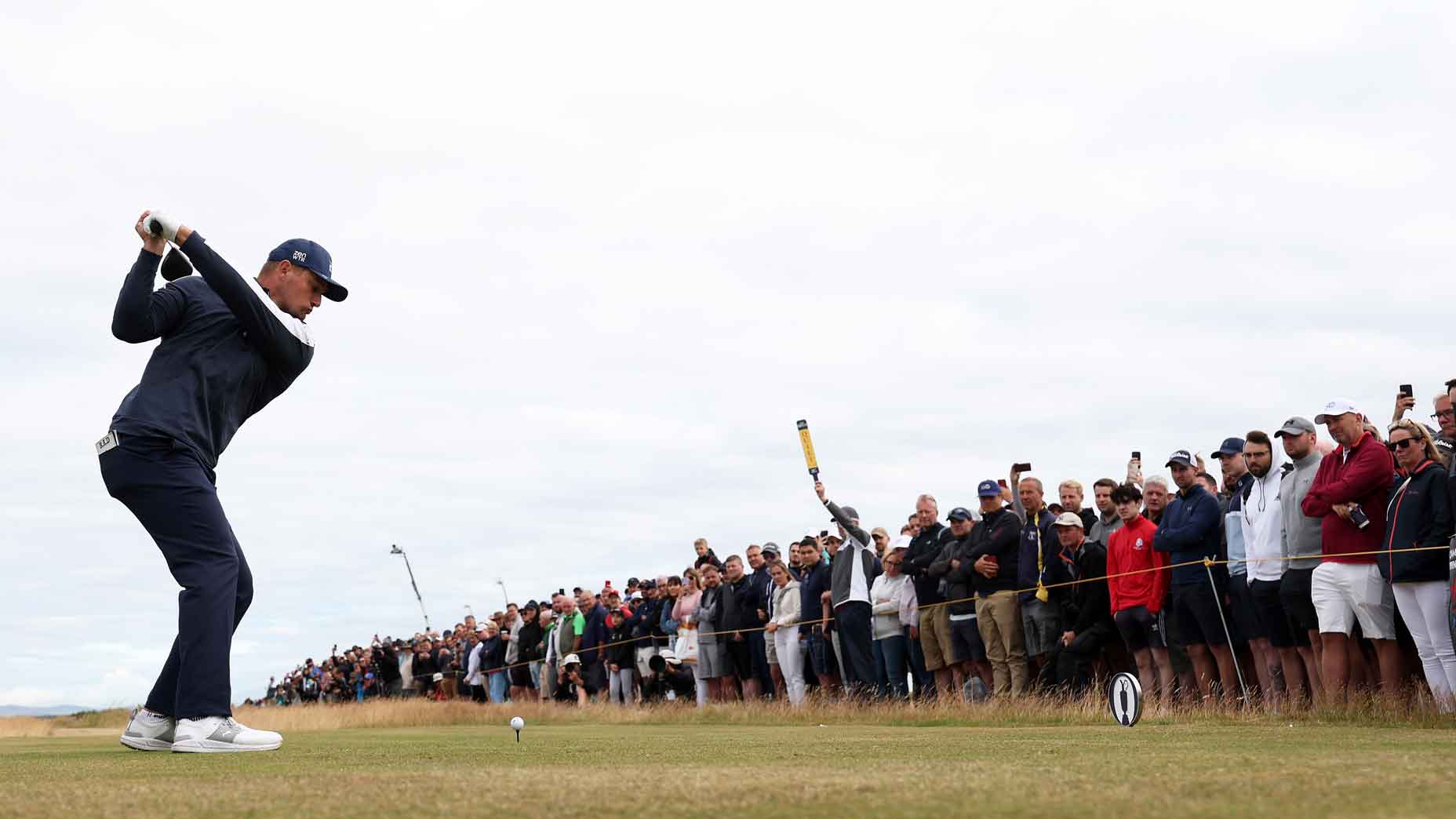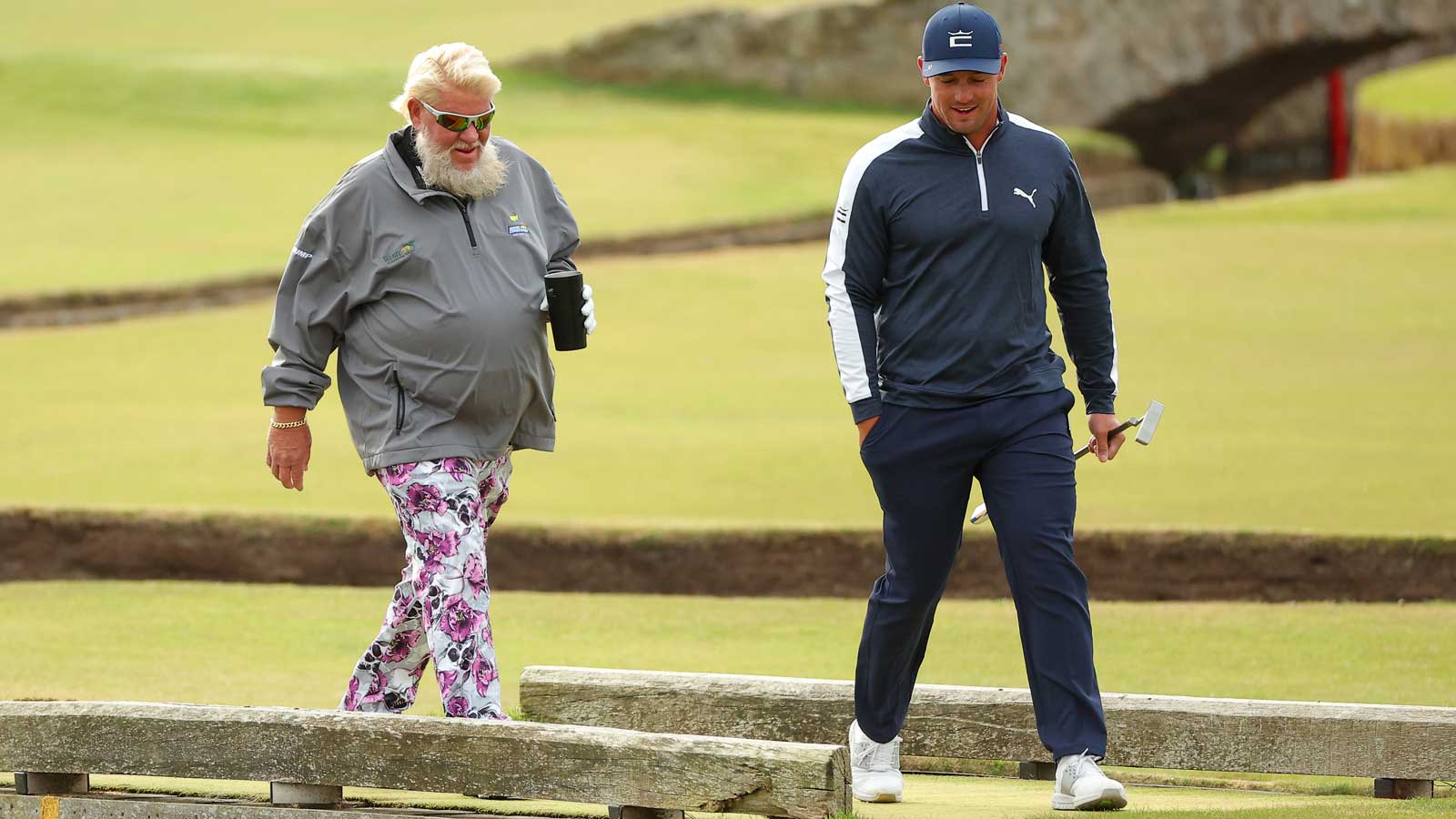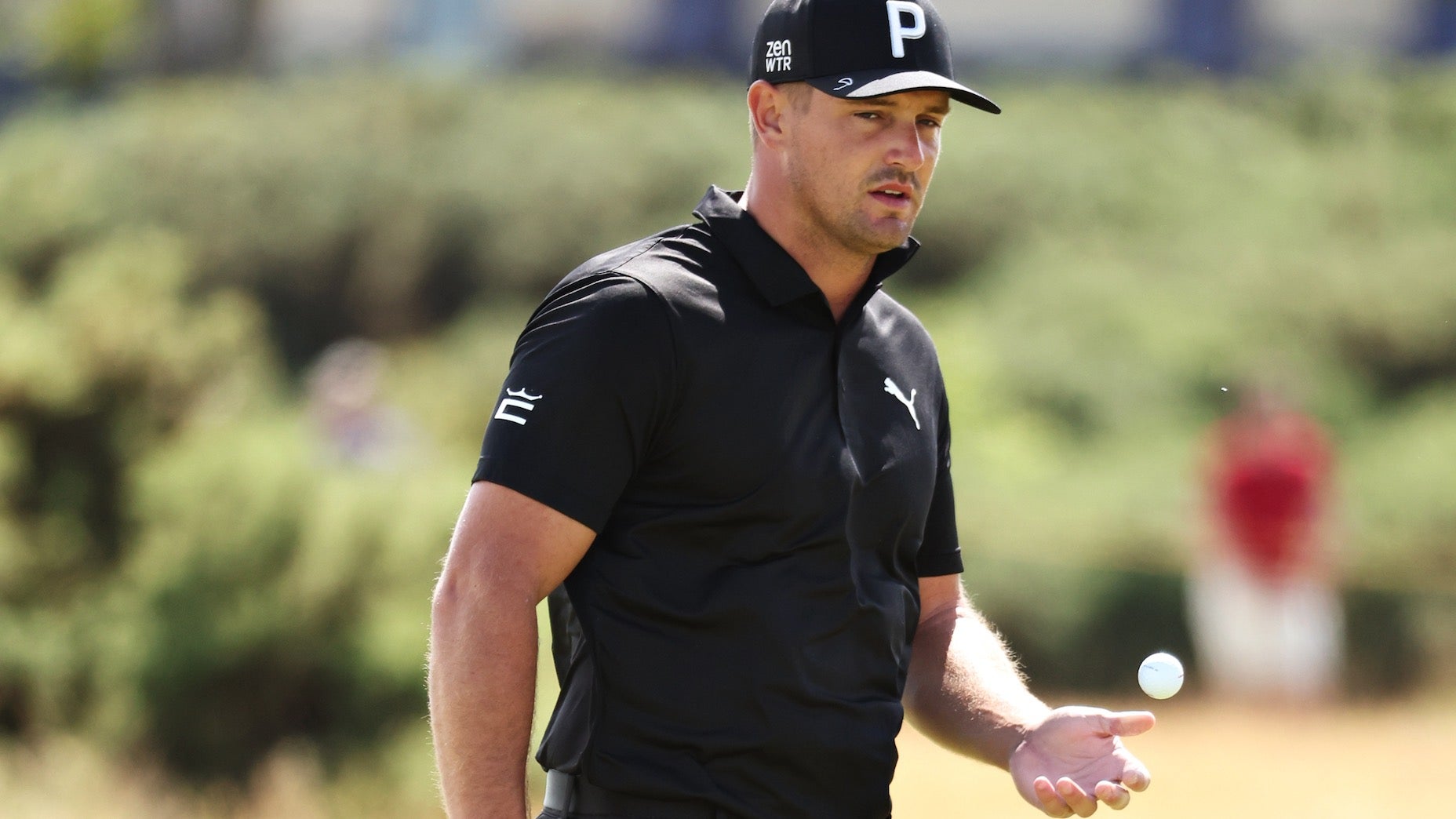As Bryson DeChambeau cranks driver after driver, grunting through impact and berating himself for losing one mile per hour of ball speed, the most abnormal thing here is how far the tees are flying.
They’re going everywhere. Fifteen feet backward and 15 feet upward on top of the mantle, out of reach. Another soars ahead 20 feet and swishes in the indoor basketball hoop. Hang around long enough and one will eventually hit you, too. It’s the price of doing business during a DeChambeau speed training session.
On this January Thursday in Frisco, Texas, golf’s new sultan of swat is in the Living Room Lab of Chris Como, one of the hottest teachers in the game. The session has paused momentarily as the scattered tees are gathered. It’s a good thing, too, because we all need a breather. The group of four has already been going at it for hours. Brian Zeigler, another teacher from Dallas National, is here, as is John Mazzanoble, the president of JumboMax golf grips. Bryson is testing grips, too.
There have been playful moments throughout the day — like Bryson demonstrating proper jump shot technique — but the intensity has been rising. When Como cues up a mellow tune from The Rolling Stones, the glistening DeChambeau whips around and asks, “What the heck is this?” Back to the wordless club music it is.
Even though just one man is doing the swinging, the entire group is grinding. Zeigler is manning the Trackman launch monitor system. Como is analyzing each swing, looking for discrepancies where speed is being ignored. Everyone is faux-doubting him, the man in the suburban arena. “Not a soul in this room thinks you can get to 215,” Zeigler chirps.
That’s today’s goal: 215 mph ball speed. Swing the driver fast as you can as many times as it takes to cross that threshold. DeChambeau hasn’t accomplished it yet, and he’s reminded by some ink on the nearby wall. “Road to 215 mph” is written on the styrofoam inserts that protect the windows in this spacious 5-bedroom. The message has been there for five weeks, ever since he reached his previous goal of 210.
“TODAY is the DAY,” Bryson screams at himself. “Do it NOW.”
We’ve lost track of which swing number he’s on — it’s well past 50 and only Zeigler knows — but what’s clear is that Como’s music maneuver has proven successful. His aggravated pupil just hit 208 mph ball speed. Then 209, followed by 208.6. He’s raising the speed floor. (Earlier in the day, DeChambeau had reached a new career-best 160 mph with his 8-iron. That club now flies a preposterous 205 yards.)

Watching him bang ball after ball into a net, it doesn’t feel like golf. This is more like an Olympic weight lifting competition with the grunting and cheering. It’s not about where the ball goes or the direction of its spin. Everything that matters takes place at impact, right between DeChambeau’s pulsating legs. A newbie to the phenomenon of speed training wouldn’t be faulted for asking, What is the point of all this?
“We want to always stay three steps ahead of everyone else,” DeChambeau says during a break.
“But what happens when other players don’t allow you to be three steps ahead,” I asked.
“Let me put it this way: 1.0 to the 365th power is 1, but what is 1.01 to the 365th power?” he asks, giving the room all of five seconds to sort out an estimate. “It’s 37.7. If I can make 1-percent gains every day, the overall gains are going to be massive.”
Even though DeChambeau later admitted this idea isn’t an original one — he saw it in a post on Instagram — these are the things that get discussed in his orbit, and in Como’s lab. When swings aren’t being made, theories are used to explain the chase. On this day, there are separate discussions on Plato’s Allegory of the Cave, an advanced poker algorithm called Cepheus, even running history. “For years, no one could run a 4-minute mile,” DeChambeau said. “And then the first year someone did it, 12 other people did it.”
“And now 2,600 people have done it,” Zeigler added.
Is DeChambeau pro golf’s version of Roger Bannister? Ask him plainly and he might say yes. He promises the group that limits do not exist. At least not here, in the lab. Como agrees with him. There’s no point in discussing limits today. Thwack goes another driver. The contact is loud enough to wake the neighbors.


Recently, DeChambeau has saddled up next to Kyle Berkshire, the 2019 World Long Drive Champion, hoping to glean a tip or two, or four, that will help him eke out extra mph. In real golf, DeChambeau is the role model, but in speed training, Berkshire is the man. He’s helped DeChambeau “push past neurological barriers,” to use Bryson’s words, extending his swing in ways his brain was not yet comfortable. DeChambeau’s goal for ball speed in competition is something in the 210 range, simply because that’s a standard of consistency Berkshire has set.
DeChambeau and Como have changed his swing drastically in these sessions and over the last 24 months. His hands get higher on the takeaway, the club head is on a different plane, there’s more rotation in his hips, he squats more into the ground and his follow through is more around his body, on the left side, than ever before. These things are all byproducts or factors of the chase. Are they things you and I can incorporate to our own swings? Maybe not all at once, but in moderation you’ll surely find gains yourself.
“I need to get taller, Chris,” DeChambeau shouts after a lull where he drops down to 207 mph. Thirteen swings later he reaches 211. “I’ve gotta find more. Gotta find it,” he says between deep exhales. “How do you find it? Get more to your back side.”
The self-talk is entertaining. And damnit if it doesn’t seem necessary. There goes another 211 mph ball. “There is no barrier to speed,” Zeigler shouts out. “That is nothing.” On the next swing, he reaches 212.8.
Zeigler and Como sit together now, and refuse to share the data as DeChambeau toils on, swing after swing. The more he knows right now, they believe, the more he’ll think about it, and the less he’ll push beyond his goal.
“Quit slowing down,” Zeigler shouts. “Pick up the f—king speed.”
“I can do it. I’m learning.” Thwack.
“That was really close,” Zeigler says.
“Close to bulls—t,” Bryson responds. “That’s what that was.” Thwack.
On his 90th driver swing, DeChambeau tops 215, but he has no idea. You can tell because Como and Zeigler quickly share knowing smiles. Thwack goes No. 91.
“Move the LEGS, Bryson,” he shouts at himself. “Okay, NOW. I’m DONE with this. It’s DONE. Right now!”
He had already done it, 22 swings ago. On his 69th swing, DeChambeau reached 216.4 mph ball speed, a personal best. On swing 84, he nearly matched it at 216.3. “Let’s go, baby!” he screams. Knucks all around.
Minutes later, the heavy breathing continues. He can’t stand still, pacing the room, removing his soaked shirt. Finally he lets his shoulders sag and calms his bulging neck. A check mark is written next to 215 on the Styrofoam wall and a new goal carved beneath it: 220.
“It’s like a runner’s high,” DeChambeau says, dazed and dripping. “It’s like Narnia. I’m in Narnia right now.”









